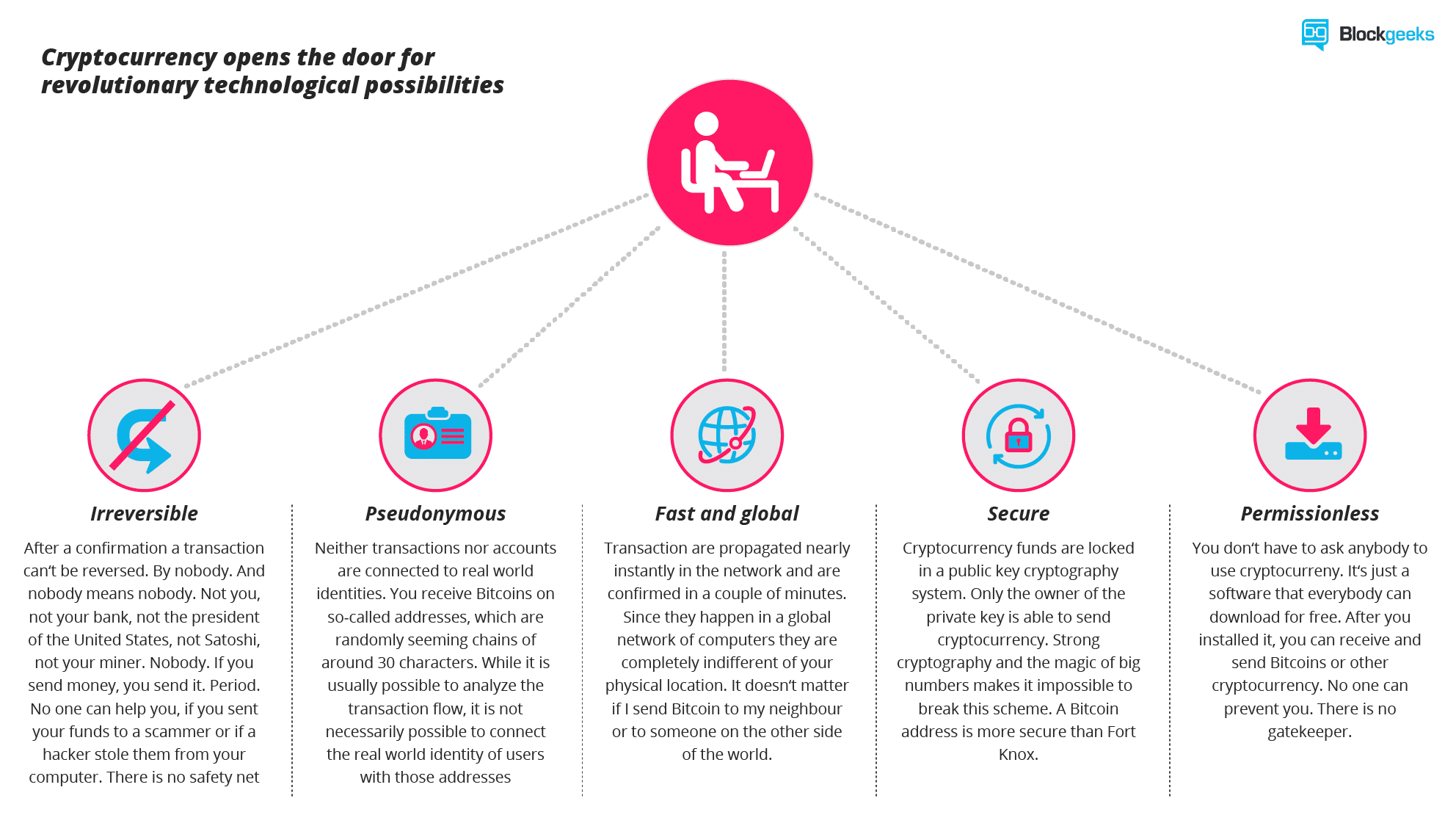Cryptocurrency: What It Is, Its Mysterious History, and Its Uncertain Future

Cryptocurrency has seized the attention of the world. Most people know it is basically “digital money.” Beyond that, the majority of people do not even have an elementary understanding of exactly what this “digital money” is.
But that hasn’t stopped everybody from talking about it. Practically every major financial institution, tech company, and government has published research about cryptocurrencies. What could cause such a huge stir among these gigantic entities? Let’s find out.
“Virtual currencies, perhaps most notably Bitcoin, have captured the imagination of some, struck fear among others, and confused the heck out of the rest of us.”
– U.S. Senator Thomas Carper
What Is Cryptocurrency?
Cryptocurrency is a virtual currency that utilizes cryptography to facilitate and verify a value transaction. Mining generates the currency itself using cryptography. Like traditional currencies, people can use cryptocurrencies to purchase or sell anything. However, unlike traditional currencies, cryptocurrency transactions occur through an encrypted channel. Besides this, cryptocurrencies also have an array of qualities distinguishing it from fiat currency. When all taken into account, cryptocurrency eliminates the need for a financial institution like a bank to be involved.

Cryptocurrency relies on using cryptographic public and private keys. These keys disperse transaction information through a peer-to-peer network. Public keys are your way of notifying the network that a transaction is going to take place. Conversely, private keys act as your signature to confirm your approval of a transaction involving you.

Transactions are then verified and recorded to a decentralized and shared ledger known as a blockchain. As discussed in this article, transactions are verified when the majority of the blockchain database network agree that it is valid. Incredibly strong cryptography keeps the consensus honest (hence the name “cryptocurrency”). The probability that someone could hack the cryptography is miraculously slim. In other words, cryptocurrency users trust mathematics, not banks.
A History Shrouded in Mystery
Before Bitcoin, there were many attempts to create some sort of digital money. But they all failed. Most relied on the centralization of transaction facilitation and verification. Many people consider “Bit Gold” as the first decentralized cryptocurrency. A prolific computer scientist named Nick Szabo invented it around 1998. It was never implemented, but it is considered to be a direct predecessor to Bitcoin.
Bitcoin and blockchain were conceived and implemented by a person using the alias “Satoshi Nakamoto.” Nobody knows who this person is or if it is just one person. In 2008, Nakamoto published “Bitcoin: A Peer-to-Peer Electronic Cash System,” a paper detailing the mechanisms behind Bitcoin and blockchain. In 2009, Nakamoto released software and a network to trade Bitcoin on. Since then, Bitcoin and other cryptocurrencies have gained massive popularity.
Nakamoto has hoarded an undisclosed amount of bitcoins over the years. And some estimate it to be worth billions. In fact, many believe this mystery person could become the first trillionaire in the world. Nakamoto’s achievement of verifying transactions through consensus cannot be understated. In a series of strategic moves, he made the “middle man” role of financial institutions obsolete. He disrupted the way that modern economies operate.
A New Currency for a New Economy
Cryptocurrency is a divisive topic among the general population of the tech and finance industries. Many people dismiss it as nothing more than a fad that you should hedge your bets on. Problems with liquidity and market fragmentation currently plague the cryptocurrency ecosystem. There are hundreds of cryptocurrencies to trade on dozens of exchanges (websites used to buy, sell, and trade cryptocurrencies). Markets can be extremely volatile. Fluctuations in values frequently occur in the double-digits, sometimes even in the quadruple-digits.
New cryptocurrencies emerge every day. Inversely, every day it seems that another cryptocurrency “bites the dust” after receiving the “pump and dump” treatment from traders. Through all of these radical economic shifts, there are still those that believe cryptocurrency to be a permanent paradigm that has only started its disruption in the world.
Many people invest in cryptocurrency instead of their own national currency which is subject to the ebbs and flows of political drama. The dark net and cyber black markets supported cryptocurrencies early on and this has only grown with time. Plenty of companies and financial institutions have taken an “adapt or die” approach to cryptocurrency. They see it as an inevitable part of their business in the future. Cryptocurrency exchange trade volumes regularly exceed traditional stock exchanges.
Cryptocurrency investors strongly believe the value of cryptocurrency will increase over time and that it will become a mainstream transaction method on par with paper currency. Regardless of which side you are on about cryptocurrency, it is undeniable that it will be fun to see what happens next with it.
Sources: Blockgeeks, Futurism, Cryptocurrencyfacts, Business Insider





